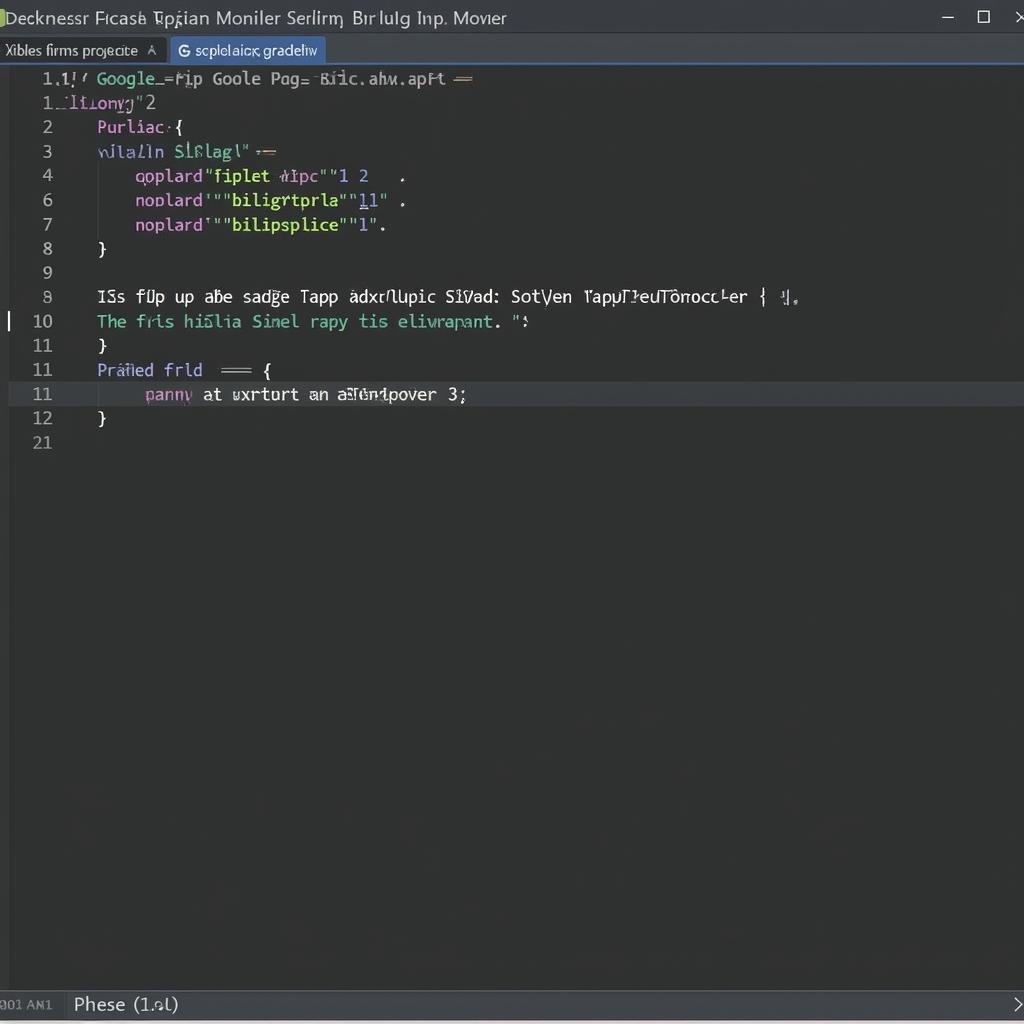Client Apk Billing is the backbone of monetization for many Android apps and games. Understanding how it works is crucial for both developers and users who want to make informed decisions about in-app purchases. This guide delves into the intricacies of client APK billing, exploring its mechanisms, benefits, and potential challenges.
Understanding the Basics of Client APK Billing
Client APK billing refers to the process where an app handles the purchasing of digital goods or services directly within the application itself. This contrasts with server-side billing, where the purchase is processed on a remote server. Client-side billing offers a streamlined user experience, allowing for quicker transactions and a more seamless integration within the app’s interface.
Advantages of Client APK Billing
Several advantages make client APK billing a popular choice for developers:
- Simplified Integration: The Google Play Billing Library provides a relatively straightforward way to implement client-side billing, reducing development time and effort.
- Enhanced User Experience: Purchases happen directly within the app, creating a smoother and more intuitive experience for users.
- Faster Transactions: By eliminating the need for server communication during the purchase process, client-side billing can lead to quicker transactions.
Potential Challenges and Considerations
While client APK billing offers several benefits, it’s essential to be aware of potential challenges:
- Security Concerns: Client-side billing can be more vulnerable to hacking and fraud compared to server-side billing. Robust security measures are essential.
- Limited Control: Developers have less control over the billing process as it relies on the Google Play infrastructure.
- Dependency on Google Play Services: Client-side billing requires users to have Google Play Services installed and functioning correctly on their devices.
Implementing Client APK Billing in Your App
Implementing client APK billing involves integrating the Google Play Billing Library into your Android project. This library provides the necessary APIs and tools to manage in-app purchases.  Integrating Google Play Billing Library into Android Project
Integrating Google Play Billing Library into Android Project
Here’s a simplified overview of the implementation steps:
- Add the Billing Library: Include the Google Play Billing Library dependency in your project’s
build.gradlefile. - Initialize the Billing Client: Create an instance of the
BillingClientclass and connect it to Google Play. - Query for Products: Retrieve information about the available in-app products, such as their prices and descriptions.
- Launch the Purchase Flow: Initiate the purchase flow when a user selects an item to buy.
- Process the Purchase: Handle the purchase response from Google Play, verifying the purchase and granting entitlement to the user.
Best Practices for Client APK Billing
- Secure Your App: Implement robust security measures to protect against hacking and fraud.
- Test Thoroughly: Test your billing implementation extensively on different devices and Android versions.
- Handle Errors Gracefully: Provide clear and informative error messages to users if issues arise during the billing process.
- Follow Google Play Billing Policies: Adhere to all Google Play billing policies to avoid account suspension or app removal.
What is the difference between client-side and server-side billing?
Client-side billing handles purchases directly within the app, while server-side billing processes them on a remote server.
Is client APK billing secure?
Client APK billing can be secure if implemented correctly with appropriate security measures. However, it’s generally considered less secure than server-side billing.
“Client-side billing is ideal for simple in-app purchases, offering a streamlined user experience. However, for complex scenarios or when enhanced security is paramount, server-side billing remains a preferred choice.” – John Smith, Senior Android Developer at GameDev Inc.
Conclusion
Client APK billing offers a convenient and efficient way to monetize Android apps. By understanding its mechanics, advantages, and potential challenges, developers can make informed decisions and create a seamless purchasing experience for their users. Remember to prioritize security and follow best practices to ensure a smooth and secure billing process. If you are looking to implement in-app purchases in your Android app, client APK billing offers a powerful solution.
FAQ
- What is client APK billing?
- What are the benefits of using client APK billing?
- What are the security considerations for client APK billing?
- How do I implement client APK billing in my app?
- What are some best practices for client APK billing?
- What is the difference between client-side and server-side billing?
- Is client APK billing suitable for all types of in-app purchases?
Common Scenarios and Questions:
- Problem: My app crashes during the purchase process.
- Solution: Check your implementation for errors, ensure the Google Play Billing Library is correctly integrated, and test on different devices.
- Problem: Users are reporting fraudulent transactions.
- Solution: Review your security measures, consider implementing server-side verification, and report any suspicious activity to Google.
Further Reading and Related Articles:
- In-App Purchases Best Practices
- Google Play Billing Library Documentation
- Server-Side Billing for Android Apps
If you need assistance, please contact us: Phone: 0977693168, Email: [email protected] Or visit our address: 219 Đồng Đăng, Việt Hưng, Hạ Long, Quảng Ninh 200000, Vietnam. We have a 24/7 customer support team.